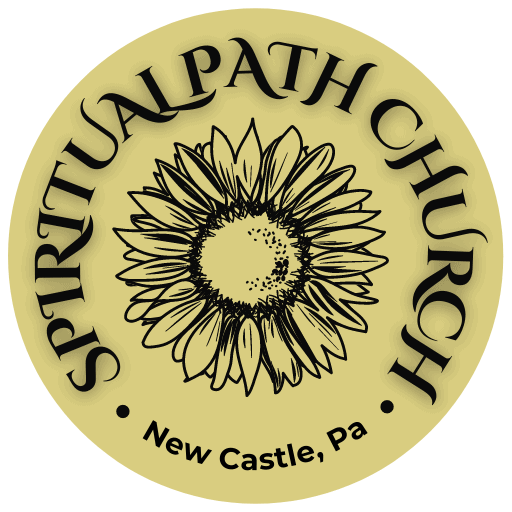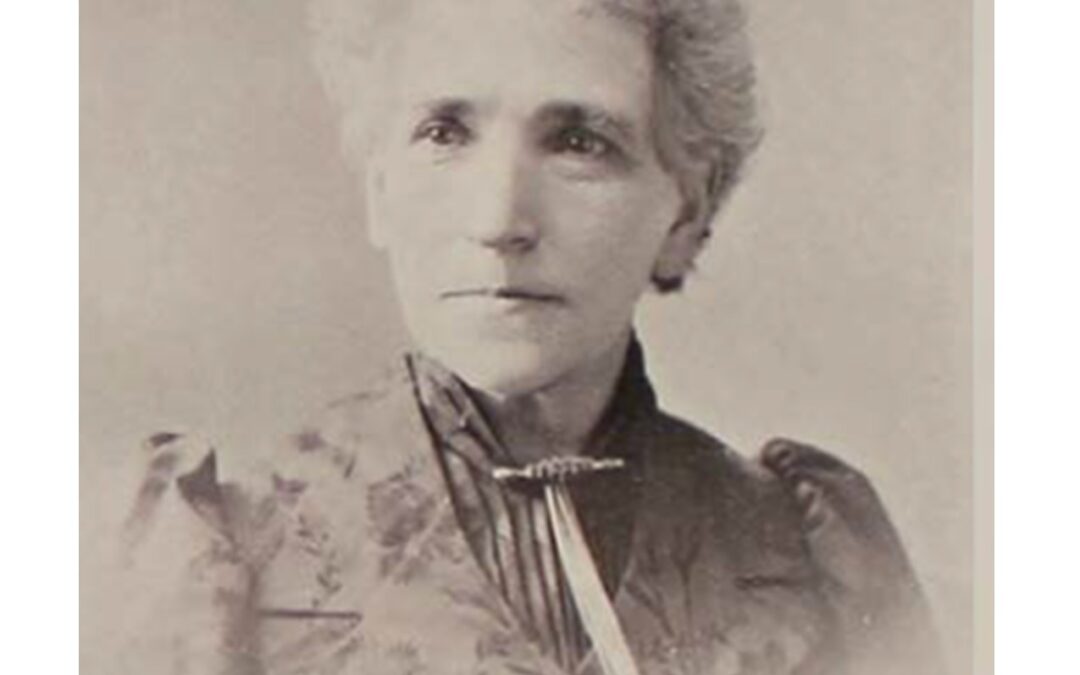
by iconicweb | Mar 4, 2024 | Karen's Korner
Amelia Hunt was born in 1829 in New York to Zachariah and Amelia Hunt of Erie County. She married farmer Hylon Colby in 1849 and they had 4 children. By 1860, the family had moved to Lake County, Indiana where Hylon continued farming. Amelia became involved with the Spiritualist movement. In 1867, Mr. J. H. Luther wrote that Amelia was “a good woman and an earnest efficient worker in the field of Progress.” She was listed as a trance speaker appearing in Penville, Indiana in 1869.
In 1870, Amelia listed her profession as a lecturer in the census. Three of her teenaged children were at home working on the farm. Apparently, the marriage did not last. Hylon remarried in 1875 and Amelia continued with her lectures. During June and July of 1878 in Winchester, Indiana a publication announced: “She will answer calls to lecture or hold grove meetings anywhere in the state. She is accompanied by Mrs. O. Smith, who is reputed to be a fine singer and guitarist.” She married James H. Luther in Indiana in 1887.
Amelia was more than just a Spiritualist minister and trance lecturer, she was an abolitionist, suffragist, free thinker, and traveled throughout the country giving lectures in both trance and normal states. She named the Cassadaga Lake Free Association which later became Lily Dale, and she was one of the founders of Camp Chesterfield. According to the Anderson Daily Bulletin, May 20 1954, there was a gathering of over 50 Spiritualists in 1885 who met in Andreson, Indiana. They organized the Indiana Association of Spiritualists or Chesterfield Spiritualist Camp. Amelia and her husband James were members.
During the 1880-90s, Amelia lectured at many locations including at Crown Point, Indiana, the Ladies’ Industrial Society of the Boston Spiritual Temple and in 1895 at Berkeley Hall where she gave a lecture entitled “If the is no God, what force in the universe creates matter?” In 1885 she spoke at Neshaminy Falls Spiritualist Camp; the topic was “Crime: Its cause and remedy.”
Amelia was described in the Banner of Light, vol. 63 no. 7, 28, April 1888 as a “tall, well-kept, white-haired lady of apparently about fifty years, in a clear tone and with much fervor and animation held the audience, without manuscript, for over an hour.” Her article in the publication spoke about Rev. Mills, the religious hierarchy that ministers support, and his uninformed opinion about female Spiritualists. “As the church teaches, the less we know the more we believe, and the more we believe the less we know.” She continued, “Spiritualism came to protect human life and reason, and that grandest of all things human, woman, the mother of nations. It is an established fact. It demands investigation. Dare anybody say it has not stood the test of the greatest scientific minds? This is not the only age when these great truths were known. Let mediums live and there will be produced some of the most remarkable phenomena ever known. The reverend gentleman knows that as Spiritualism marches on his business is gone.”
Amelia H. Luther died 26 Dec 1897 in Muncie, Indiana after making a large impact on Spiritualism.
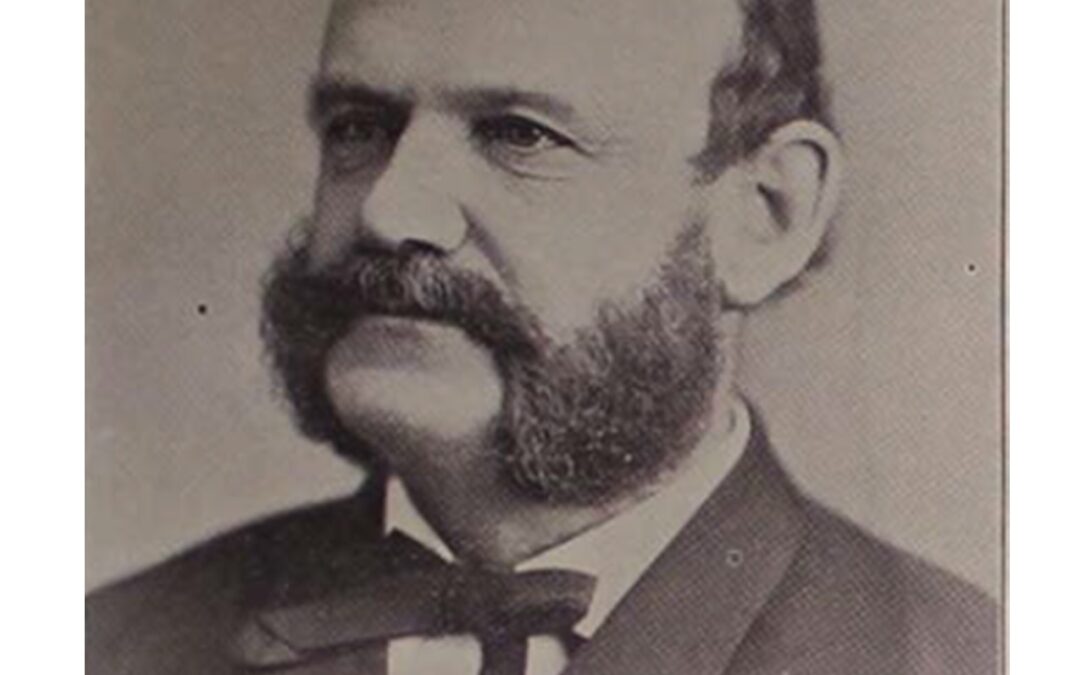
by iconicweb | Feb 29, 2024 | Karen's Korner
Captain Benjamin F. Lee was born 1835 in the state of New York and enlisted to fight with the Union in the Civil War in August of 1862, in Geneva, New York. He was in the 126th Infantry, wounded and imprisoned at Harpers Ferry in September 1862, and discharged in 1864. Benjamin moved to Sandusky about 6 years after the war where he practiced law with Judge Cooper K. Watson. He was elected prosecuting attorney in 1873 and served one term.
Benjamin invested in the Arizona Gold Mining Company and lost his entire investment. By 1880, according to the Sandusky, Ohio census, he was a 45-year-old lawyer and border living at a hotel run by H. W. Powers. By that time, Benjamin was interested in the Spiritualist movement. He became involved with the development of the Lake Brady Spiritualist camp in Mantua, Ohio and was listed as a Mantua attorney in 1892.
In 1896, Benjamin was President of the Brady Lake Spiritual Association. “This association has in view the establishment of a camp or resort, where thought may be fully expressed and as freely criticized; where the lowest may look for aid and aspire to become the highest; where goodness, purity, wisdom and all the attributes of the truthful soul may be taught and practiced; and where spiritualism in its most comprehensive application shall be fostered.”
Unfortunately, tragedy befell him. The Akron Beacon Journal, 22 Apr 1898, wrote: “The cottage of Captain Benjamin F. Lee, president of the Lake Brady Spiritualists’ Association was burned to the ground Thursday Evening and this morning the charred remains of the captain were found in the ruins.
“The cottage was the finest at the lake and was occupied by Captain Lee the year round. It was finely furnished and contained a valuable library of several hundred volumes. A number of boys discovered the fire at 7:30 o’clock last evening. When they arrived at the cottage they found the rear part in flames. Breaking in the front door they called for Lee but failed to receive an answer. They were driven out by the flames and the cottage was soon entirely consumed without any of its contents being saved. The loss will be close to $1,500.”
Coroner said he probably fainted because of preexisting heart problems and knocked over lamp. At the time of his death, he was well-known among Spiritualists throughout the country, and especially in Akron. He had lived in both Cleveland and Mantua.
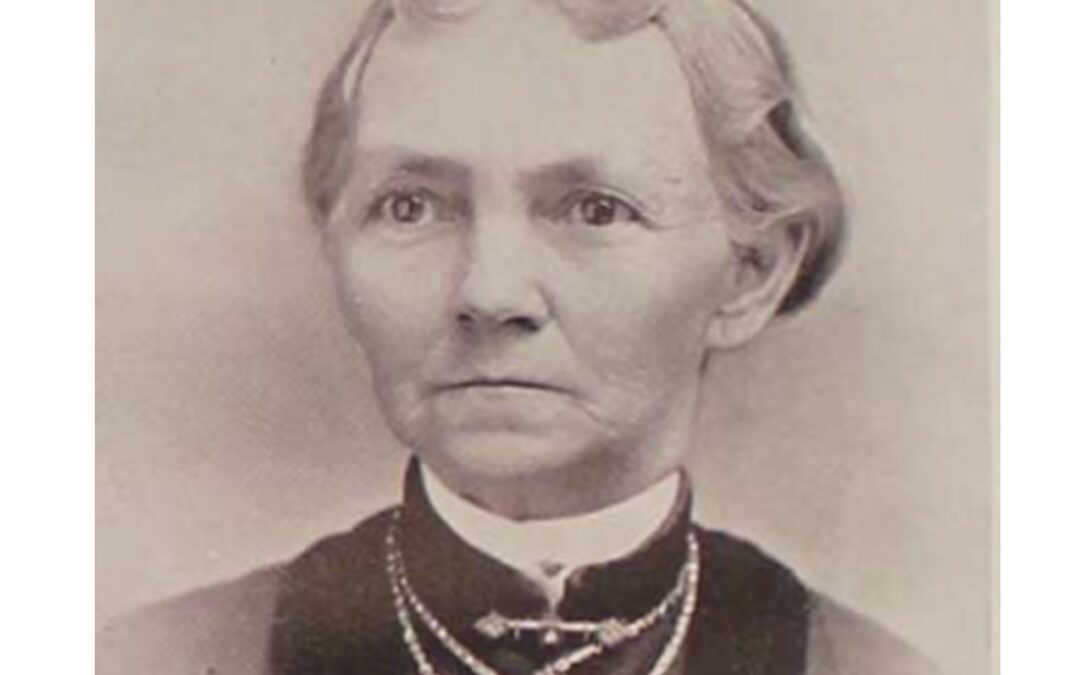
by iconicweb | Feb 23, 2024 | Karen's Korner
Elizabeth B. Price was born in 1828 in Vermont, one of the seven children of John and Asenath Price. The family moved their home to Three Rivers, St. Joseph County, Michigan. Elizabeth married Lewis Sanford about 1845 and they had a daughter and two sons before Lewis died in Sumner, Tennessee during the Civil War in 1863. Elizabeth eventually married physician Andrew Kinne in 1877 in Cook County, Illinois. By 1880, they were living in Colon, Michigan with her son L. W. Sanford. Elizabeth was listed in the census as a physician at that time.
Elizabeth was listed in the directory of Deceased American Physicians (1804-1929) as an Allopath and other sources refer to her as a magnetic healer. Magnetic healing was a popular curative at the time. Both she and Andrew were active in the Spiritualist community, attending camp meetings at Lake Park and South Haven in the 1890s. In 1893, Andrew conducted a séance test and the couple traveled from Illinois to Missouri to visit her children.
Andrew died in 1895 at 72 years old, but Elizabeth continued her work as a doctor and magnetic healer from her home in Dwight, Illinois. On February 21, 1913, The Kansas City Times published Elizabeth’s obituary. It stated that, “Mrs. Elizabeth B. Kinne, 86 years old, the mother of E.J. Sanford, former president of the Union Depot Company, died of heart failure at her home in Excelsior Springs last night. Mrs. Kinne was a pioneer physician in Illinois, having started a practice in Dwight more than sixty years ago. She moved to Excelsior Springs ten years ago.” She was buried at Mt. Washington cemetery.

by iconicweb | Feb 5, 2024 | Karen's Korner
An article in The Light of Truth vol. 13, no. 4, 1893 wrote that Jennie Bennitt Hagan Jackson was born in Lowell, Massachusetts in 1860. Her father passed away when she was only ten months old. Mrs. Janet Hagans’s sister, Jane Hoyt, came to live with them and the women purchased a small cottage in South Royalton, Vermont. During the winter of 1863-64, Jennie began showing signs of mediumistic ability. All her relatives were Spiritualists, including her mother and aunt who were mediums.
Jennie said that “she felt when spirit hands touched and caressed her, what she heard when they laughed in her company, and many other things of interest. At four years of age, she saw and heard much, but was so weak and frail they dared not urge her development on either spirit or mortal side.”
Once in school, she began to see spirits, including Dr. Hoyt, her father, and Mr. Jasper Arren, an Englishman. Hoyt promised that Jennie would “never want for the comforts of life” but her health remained poor. Her mother and aunt sat in a silent circle on Thursday nights, hoping to heal her and aid in her development. When she was 11, she had a hemorrhage in her lungs and her family feared the worst would happen. The spirits were protecting her and she recovered before they moved to Nebraska in 1873. There she regained her health and attended school. She gave her first public lecture when she was 13 in Arlington, Nebraska.
Jennie continued to lecture while in trance and gave impromptu poems on subjects given to her by the audience. In 1875, she travelled to Wisconsin and Ohio where she had relatives. She lectured almost every night. She was also involved in the temperance movement. In 1876, she returned to Vermont with her mother. She attended school while going to adjoining towns to lecture.
In 1887, she joined the Lake Pleasant Camp meeting for the first time. Other camp meetings followed, and she travelled as far west as Missouri and Iowa, and even went to Canada. In 1891 at the Lily Dale camp meeting, she was married to Bradford D. Jackson of Grand Rapids Michigan.
Jackson was born in Sullivan, Ohio and was a landscape and scenic view photographer who began his career taking portraits in Grand Rapids, Michigan. “A vast audience took part in the ceremony, and all joined in good will, love, and harmony toward the newly wedded pair.” They lived in Grand Rapids with Jennie’s mother. “Mrs. Jennie B. Hagan Jackson is continuing her work, and her husband is a great aid to her, whose profession is that of an artist and photographer. There new line is in connection with a stereopticon and finely illustrated lectures from photographic views which Mr. Jackson makes.” They were putting together a book of views of various Spiritist camp meetings. An album still exists that contains photos taken at four camps: Onset Bay Grove (Wareham, MA), Lake Pleasant (Montague, MA), Nickerson’s Grove (Harwich, MA) and Queen City Park (South Burlington, VT).
By 1898, Jennie was a Spiritualist leader in Fort Worth Texas, building a spiritual center. Attendance was large and prospering. Bradford filed for divorce in 1899, citing “cruelty and desertion” as the cause. Jennie quickly married Horace Daniel Brown, a traveling salesman, the following year. They maintained an inn. The same year, Jennie attended the International Jubilee at the Golden Jubilee Celebration of Spiritualism in Rochester, New York. Jennie and Cora L. V. Richmond gave impromptu poems from a subject given by the audience, including “The Sinking and Rising of the Maine”, and for an encore “Mountain and Valley.”
Jennie died in 1907 in El Campo, Texas while still in charge of a parish. The Randolf Vermont Herald and News, February 7, 1907, wrote, “At an early age Mrs. Brown developed a marvelous intuitive faculty of mind, empowering her to deliver a strong and well composed poem, upon any subject given her without premeditation or hesitation and always very gracefully. In later years she commenced to lecture and preach and had become noted as an interesting speaker.” Jennie got blood poisoning from an injured knee and died a few days the injury, leaving a “fine estate and beautiful home.” Horace Brown died a decade later.

by iconicweb | Jan 29, 2024 | Karen's Korner
Benjamin B. Hill was born to Benjamin and Rebecca Hill in 1830 in Middlesex, Massachusetts. His first marriage was to Sarah A. Steele in 1850. They had five children while Hill worked as a machinist in Chicopee, Massachusetts. He was successful in his trade, and holder of roughly 75 patents related to the stamp trade. By 1867 he was a manufacturer of Seal Presses in Springfield, Massachusetts and his travels took him as far west as California. He formed the B. B. Hill Manufacturing Company in 1880, which employed 18 skilled workers.
Hill’s life was not without tragedy. In 1875, his youngest daughter, Sarah, died at the age of 15. He and his wife divorced soon afterward. By 1880 he had married his second wife, Nellie E. Channing who had also been married before to a man named Stafford. The Hills moved to Philadelphia about 1882 when he relocated his business there. They traveled to Europe at least twice.
Hill’s interest in Spiritualism began before the death of his daughter. He was a delegate to the National Spiritualists Convention as early as 1873 and a well-respected early pioneer of the spiritualist movement in the United States. He was also active in the Camp Meeting Association in Maine. An 1881 newspaper account stated that “Dr. Abbie E Cutter on her travels spent a few weeks at the home of B. B. Hill and his wife in Springfield, Mass. Mrs. Hill who was formerly a public medium, is doing a great deal for the cause of Spiritualism. A great interest has been awakened in Springfield by the book of Samuel Bowles.”
At some point, they adopted Mercy C. Cadwallader as their daughter. In the 1890s, Cadwallader lived in Philadelphia where she worked for the Oriental Publishing Company. She was involved with the publishing of Antiquity Unveiled by J. M. Roberts. It was here that Cadwallader became interested in Spiritualism. Cadwallader joined the National Spiritualist Association (NSA) which was organized in 1893, and in 1894 she was elected honorary Vice-President. Unfortunately, Nellie died in 1898 of “fatty degeneration of the heart” and Hill remained a widower the remainder of his life.
Hill sponsored the publication of the book by Boston Banner of Light Publishing Co., The Christ Question Settled or Jesus, Man Medium, Martyr. written by J. M. Peebles in 1899. Hill said of Peebles book: “Now we come to those historical characters to which Dr. Peebles in his book refers to as witnesses to prove the authenticity of the historical Jesus. He and others point to the mutilated histories of these celebrated characters for proof, but they now speak to us off-hand from spirit life. This I consider direct testimony; therefore, it should take precedence of all book testimony that has been manipulated by priestcraft.”
Hill died in 1913 at the age of 83 while living in Chicago with Mercy C. Cadwallader and her husband. Services were held at the Temple of the First Association of Spiritualists of Philadelphia on July 12th 1913. In his will, he stipulated that he would be buried at Northwood Cemetery, in a plot that he bequeathed to Cadwallader.
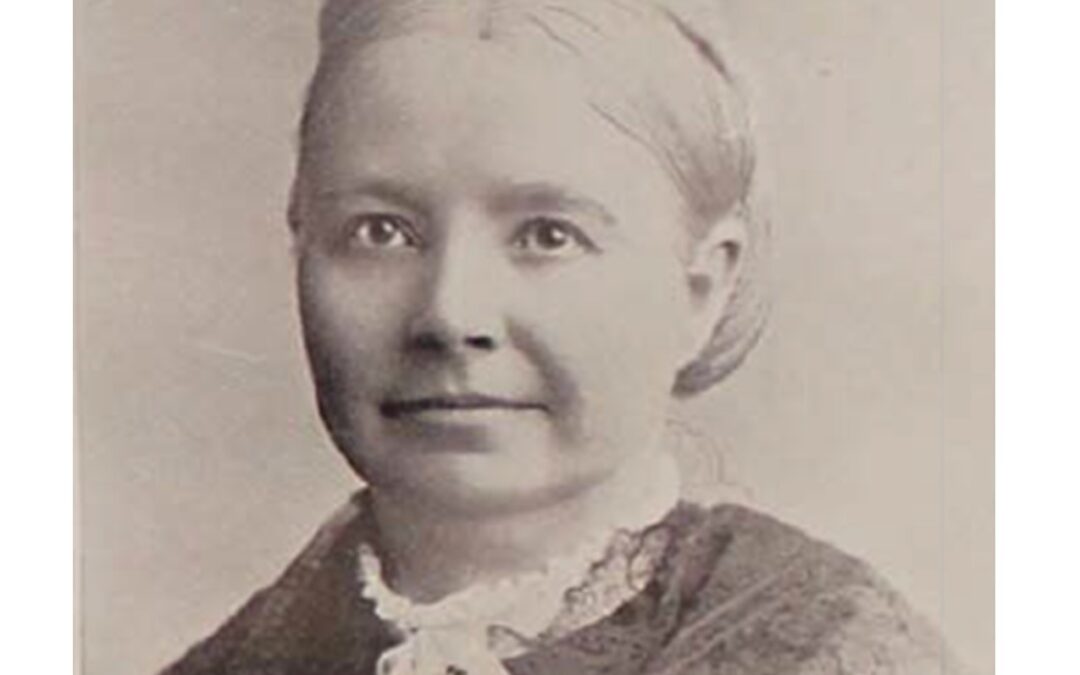
by iconicweb | Aug 21, 2023 | Karen's Korner
Abby A. Judson was born in 1835 in Myanmar (Burma) to Rev. Dr. Adoniram and Sarah Hall Judson, both Baptist missionaries at the time. In 1841, one of her younger brothers, Henry, passed while they were on a trip to India. That was followed by the death of her mother in 1845 while hey were in the harbor of St. Helena, USA. Her father remarried and the family returned to Burma, where her father died in 1850.
Abby was educated at several private schools along the east coast of the United States. She worked as a governess and then teacher in New England from 1853-1879. After a year traveling in Europe, she founded the Judson Female Institute in Minneapolis in 1879. After becoming a Spiritualist in 1887, she closed her seminary and began giving private lessons and devoting herself to Spiritualism.
In 1890, after attending a camp meeting in Clinton, Iowa, she was inspired to create a new Spiritual association in Minneapolis. Since she wasn’t a medium or healer, the group decided she would be the one to educate the public with informational writings and lectures. She described her process of writing in Why She Became a Spiritualist: Twelve Lectures. “On these two afternoons, when ready to write, she deadened her door-bell, darkened her study with close curtains, ‘entered her closet and shut to’ the curtain, and there played on her organ in the dark, until she saw waves of magnetic light, resembling the aurora borealis shimmering over the Arctic sky. Shen then went to her desk, raised the curtain just enough for her to see to write, and then wrote notes, words and sometimes whole sentences, without conscious effort.”
By 1891, Abby was speaking in public. A dozen of her lectures and her biography were published in the book, Why She Became a Spiritualist: Twelve Lectures (1895). Other books included: The Bridge Between Two Worlds (1894), Development of Mediumship by Terrestrial Magnetism, and From Night to Morn; or an Appeal to the Baptist Church. Her lectures included topics such as: What is Spiritualism, Do Spiritualists Believe in God, Personal Evidences of Spiritualism, Unreasonable Dogmas, and What is Death.
She compared Spiritualism to other religions in Why She Became a Spiritualist: Twelve Lectures, saying: “All these religions have their limitations. These limitations arise from narrowness of doctrine; from a servile deference to one man, its founder; or from race restrictions. Spiritualism, on the other hand, is utterly comprehensive. It is a cult, or rather a knowledge, that reaches all men in all conditions, in all countries, and in all ages of the world. Yes, it goes beyond this physical world, and embraces in its divine sway, all spirits out of the body, and all spirits in all the universe.”
Abby died a tragic death when a lamp accidently overturned next to her bed while she was reading. Some of the burning oil fell on the bed and ignited her clothes. She ran from the house but died from her burns in December of 1902 in Arlington, New Jersey.

